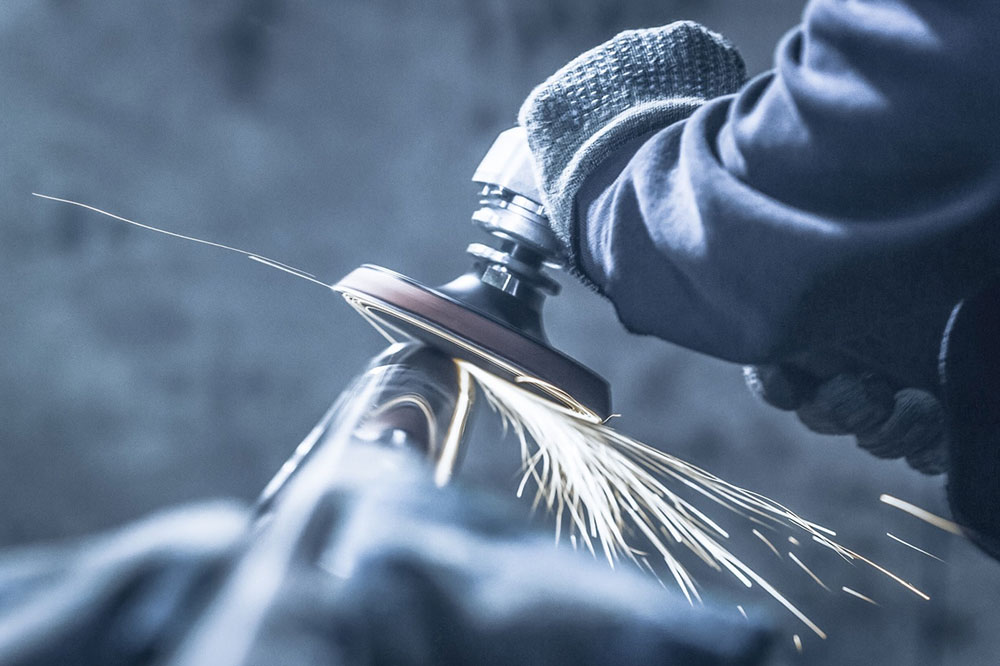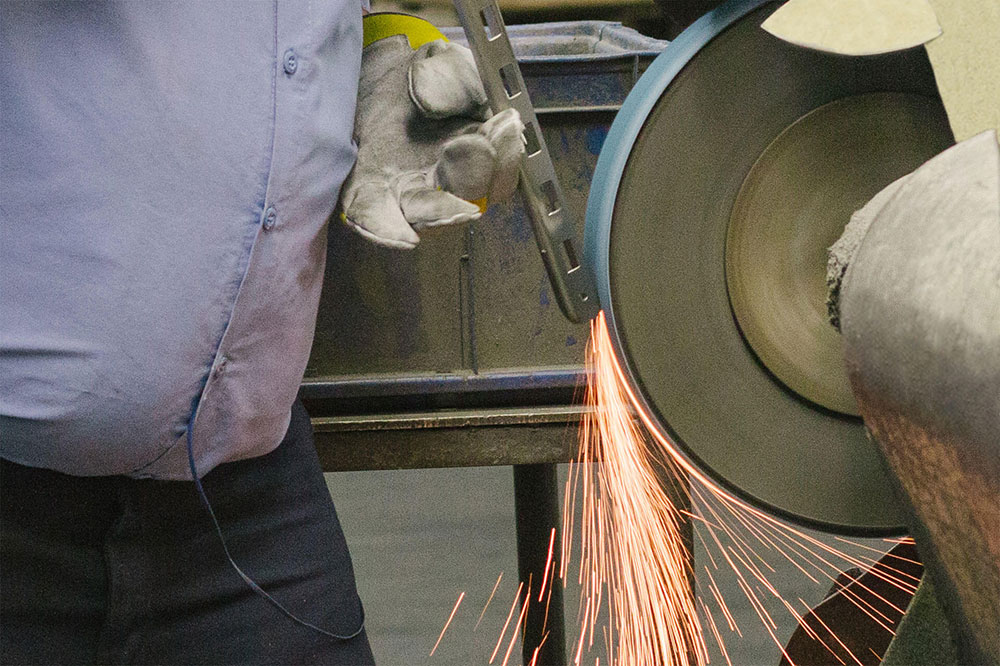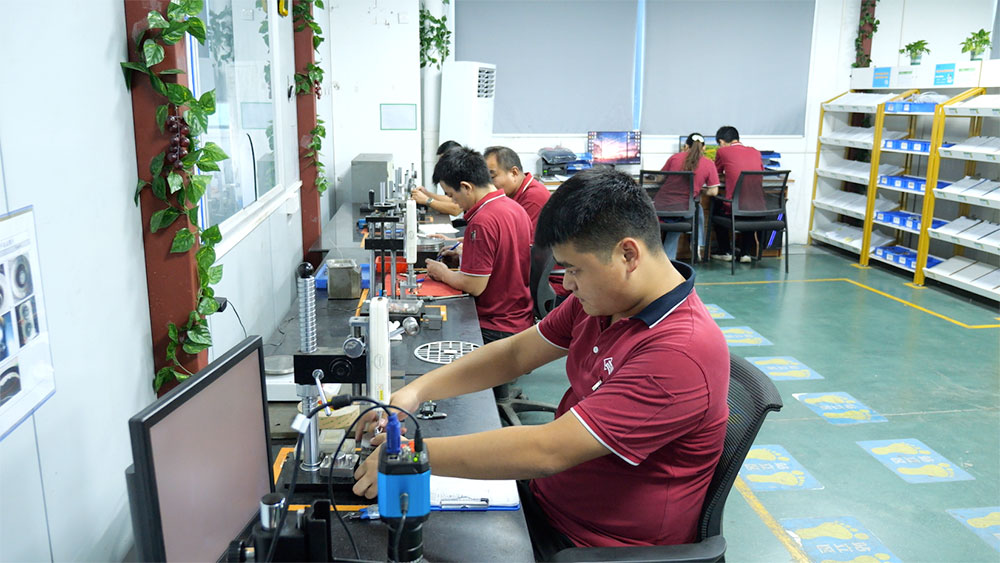- Information Classification
Electroplating Pretreatment | Common Polishing Methods 2025
Author | Zhengqiang Industry Insights Team
Updated | October 2025
Introduction: The Role of Electroplating Pretreatment in Modern Manufacturing
In today’s high-precision manufacturing environment, Electroplating Pretreatment serves as the backbone of every successful plating operation. Before a product can achieve its brilliant metallic finish, it must undergo a carefully controlled series of surface preparation processes designed to enhance adhesion, smoothness, and durability. Among these processes, polishing stands out as the most important — it not only removes unwanted imperfections but also defines the surface microstructure that directly affects plating performance and visual appeal.
At Zhengqiang Technology Group, we understand that a perfect electroplating finish starts with a perfect surface. Our factory integrates advanced polishing lines, surface treatment automation, and strict process controls to ensure every product achieves the highest plating quality. From motors, capacitors, and precision components to custom molds and metal shells, our Electroplating Pretreatment processes are designed for consistency, energy efficiency, and scalability. In 2025, as industries demand finer finishes and more sustainable production, Zhengqiang remains at the forefront of polishing technology innovation and global-quality manufacturing.

Understanding the Importance of Polishing in Electroplating Pretreatment
Polishing is far more than a cosmetic step — it is the foundation of effective Electroplating Pretreatment. A well-polished surface ensures strong metal adhesion, reduced porosity, and improved corrosion resistance. Without polishing, even high-quality electroplating solutions cannot produce smooth, defect-free coatings. The goal is to create a mirror-smooth surface where the electroplated layer bonds seamlessly and uniformly.
Polishing typically consists of three progressive stages:
-
Coarse polishing removes visible scratches, weld beads, and oxide scales using abrasive compounds and hard polishing wheels.
-
Medium polishing follows, using softer wheels and finer abrasives to eliminate deep marks and create a semi-gloss finish.
-
Fine polishing, the final stage, applies soft buffing wheels and ultra-fine compounds to achieve a mirror surface ready for plating.
Each stage contributes to surface integrity, micro-smoothness, and optimal reflectivity. In industries such as electronics, aerospace, and automotive manufacturing, this step ensures not only visual perfection but also the reliability of parts under high-performance conditions. The result is a product that doesn’t just look polished — it performs at a higher level.
Types of Polishing Wheels Used in Electroplating Pretreatment
The performance of a polishing operation in Electroplating Pretreatment is heavily influenced by the type of polishing wheel selected. Different materials and designs yield different results, affecting everything from surface roughness to heat dissipation and durability. Zhengqiang Technology Group utilizes a full range of customized wheels engineered for diverse applications, ensuring consistency and efficiency across each polishing stage.
Sewn-Type Polishing Wheels
Sewn-type wheels are made by stitching fabric discs together with specific patterns such as concentric, spiral, or radial seams. These stitches determine the wheel’s hardness and flexibility.
-
Use: Coarse polishing of metals requiring strong cutting power
-
Features: Durable, stable under high pressure, and excellent for removing large imperfections
Because of their robust construction, these wheels are especially suitable for steel and hard alloys, where aggressive surface removal is necessary. In Electroplating Pretreatment, they are often used to level surfaces and eliminate oxidation layers, paving the way for precise mid- and fine-polishing steps.
Unsewn-Type Polishing Wheels
Unsewn wheels, composed of layered cloth without stitching, are designed for soft, delicate polishing. They are available as disc-type or flap-type wheels.
-
Use: Final polishing and bright finishing
-
Advantages: Excellent flexibility, low heat buildup, and superior surface contact
Flap-type wheels, with their improved airflow design, extend service life and maintain stable performance during long operations. This makes them ideal for aluminum, brass, and decorative metals that require high gloss and low deformation under pressure.
Folded and Corrugated Polishing Wheels
Folded polishing wheels are formed by folding cloth sheets into multiple “pocket” layers, giving them excellent elasticity and the ability to hold polishing agents effectively. Corrugated wheels, made from angled fabric strips wound around grooved cylinders, enhance ventilation and prevent heat accumulation.
-
Use: High-speed polishing of large and heat-sensitive parts
-
Advantages: High elasticity, strong cooling capacity, and extended operational time
These designs are widely used in Electroplating Pretreatment for large automotive and industrial components, where consistent surface temperature and quality are crucial for achieving uniform plating adhesion.

Polishing Compounds in Electroplating Pretreatment
The polishing compound is the invisible hero of Electroplating Pretreatment. It determines not only how fast a surface can be refined but also how well the plating layer will adhere afterward. Polishing compounds are typically divided into solid pastes and liquid solutions, each optimized for different materials and polishing intensities.
Solid Polishing Compounds
-
White Polishing Compound:
Formulated from calcium oxide, magnesium oxide, and stearic wax, this compound features fine abrasive grains and a soft cutting action. It is ideal for soft metals like aluminum, copper, and plastic parts, especially during the fine polishing stage. However, because it is sensitive to humidity and air exposure, it should be stored carefully to prevent deterioration. -
Red Polishing Compound:
Made from iron oxide and aluminum oxide, this medium-hard compound is versatile and widely used for rough polishing of steel, aluminum, and general metal components. It provides a balance between cutting and smoothing, serving as an effective bridge between coarse and fine polishing phases. -
Green Polishing Compound:
Composed primarily of chromium oxide, this compound offers exceptional hardness and cutting ability. It is suitable for stainless steel, chromium-plated parts, and high-hardness alloys. Its aggressive abrasive action ensures a brilliant, corrosion-resistant finish — a key requirement in Electroplating Pretreatment for high-end industrial components.
Each type of compound can be tailored further by adjusting grain size and binder composition, allowing precise control over finish texture and speed.
Liquid Polishing Compounds
As manufacturing moves toward automation, liquid polishing compounds are becoming increasingly popular in Electroplating Pretreatment lines. These fluid agents replace the wax binder used in solid compounds with oil-based or water-based emulsions that can be sprayed continuously onto polishing wheels.
Advantages include:
-
Continuous feed ensures consistent abrasiveness and even polishing coverage
-
Reduces wheel wear and minimizes downtime for compound reapplication
-
Leaves less residue on the surface, making cleaning easier and faster
-
Improves environmental safety by eliminating flammable ingredients
Modern polishing systems use pressurized tanks or automated pumps to deliver these liquids with precision. This not only enhances production efficiency but also ensures that each workpiece receives a perfectly uniform polish — a standard Zhengqiang Technology Group proudly upholds in every Electroplating Pretreatment process.
Emerging Trends in Electroplating Pretreatment and Polishing Technology (2025)
As we move deeper into Industry 4.0, Electroplating Pretreatment is rapidly evolving through automation, digitalization, and sustainability-driven innovation. In 2025, manufacturers are adopting intelligent polishing systems that integrate sensors, AI, and eco-friendly compounds to achieve higher efficiency and lower waste.
Automation and AI Precision Control
Advanced robotic polishing systems equipped with pressure sensors and feedback algorithms can now self-adjust in real time. They adapt to variations in surface hardness, shape, and material type, delivering consistent polishing quality with minimal human intervention. This reduces variability, improves yield, and allows for scalable production even for complex geometries.
Green Polishing Materials
Environmental concerns have prompted the development of water-based and biodegradable polishing agents. These alternatives to petroleum-based products help manufacturers comply with global environmental regulations while maintaining exceptional polishing efficiency. By adopting these eco-friendly formulations, Zhengqiang Technology Group supports both quality enhancement and sustainable production goals.
Real-Time Surface Monitoring
Using 3D optical surface profilers and AI inspection tools, modern factories can instantly evaluate surface smoothness, reflectivity, and micro-defects after each polishing stage. This ensures every workpiece entering the plating bath meets exacting standards of roughness and cleanliness, significantly improving coating adhesion and appearance.
Why Choose Zhengqiang Technology Group for Electroplating Pretreatment
Choosing the right partner for Electroplating Pretreatment can make the difference between an average product and a world-class one. At Zhengqiang Technology Group, our commitment to excellence is built upon decades of manufacturing experience, technological innovation, and client-focused service.
-
Comprehensive Capabilities: From rough polishing to high-gloss finishing, we offer complete surface treatment solutions under one roof.
-
Advanced Machinery: Our production lines incorporate smart polishing robots, dust-free environments, and automated material handling systems.
-
Strict Quality Assurance: Every batch undergoes precision inspection to ensure uniformity and repeatability.
-
Customization Options: We develop specialized polishing formulas and wheel combinations for each client’s material and surface requirements.
-
Sustainable Practice: All our Electroplating Pretreatment compounds and waste systems are environmentally compliant, minimizing impact while maximizing efficiency.
Partnering with Zhengqiang means gaining a reliable ally who values precision, durability, and sustainability as much as you do.

Frequently Asked Questions (FAQ) about Electroplating Pretreatment
Q1: What exactly is Electroplating Pretreatment?
Electroplating Pretreatment refers to the critical preparatory steps — such as cleaning, polishing, and activation — performed on a metal surface before electroplating. It ensures a smooth, contamination-free base, allowing the plating layer to bond firmly and evenly.
Q2: Why is polishing so important before electroplating?
Polishing improves adhesion by eliminating surface irregularities, oxides, and residues. A mirror-smooth finish reduces plating defects, enhances corrosion resistance, and produces a high-gloss, decorative appearance.
Q3: Which materials can be polished before electroplating?
Most metals and alloys — including steel, brass, aluminum, copper, and even plastic substrates — can undergo polishing as part of Electroplating Pretreatment. The technique and compound vary based on hardness and surface characteristics.
Q4: How does Zhengqiang ensure polishing quality consistency?
We combine automated polishing technology with manual quality inspection. Our technicians continuously monitor wheel wear, pressure, and polishing speed to guarantee consistent surface texture and reflectivity.
Q5: Is Zhengqiang’s polishing process environmentally friendly?
Yes. Zhengqiang employs non-toxic, water-based, and recyclable polishing solutions that reduce waste and energy consumption. We comply with ISO environmental standards and continually innovate toward green manufacturing.
Conclusion: Elevate Surface Perfection with Zhengqiang Technology Group
In 2025 and beyond, Electroplating Pretreatment remains the cornerstone of premium surface finishing. Whether for industrial precision parts or decorative products, the right polishing process ensures strength, longevity, and aesthetic brilliance. Zhengqiang Technology Group continues to lead this evolution by combining traditional craftsmanship with modern automation and eco-conscious production methods.
If you seek a trusted partner for high-quality Electroplating Pretreatment and precision polishing services, contact Zhengqiang Technology Group today.
Let our expertise enhance your products’ value, durability, and global competitiveness.

